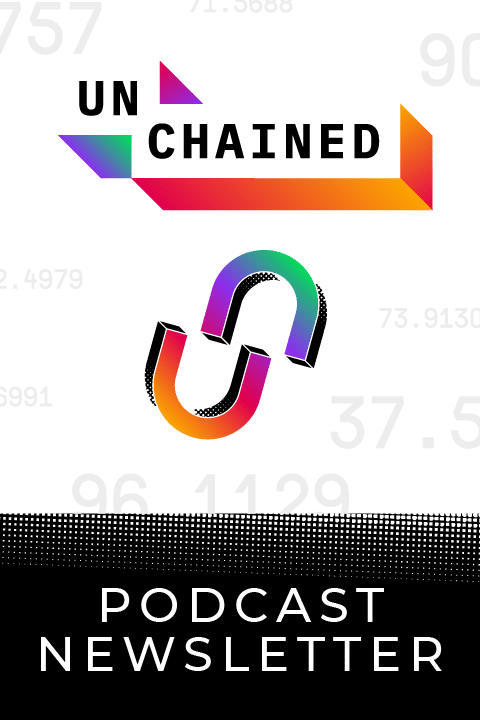Plus, ways to value these networks.
This week the market ticked up and Bitcoin surpassed $10k, again. Larry Cermak of the Block released some charts showing why he believes sentiment has changed. For those of you interested in price, CoinMetrics published the first part of its deep dive into all the ways to value crypto assets. Meanwhile, we get a look at China’s blockchain patents, plus hear tales from some of the people hit by crypto scams.
On this week’s Unchained, Alex Gladstein read his riveting essay on a world without Bitcoin, and his recommendations for how to prevent that from happening. And on Unconfirmed, we hear from Crypto Mom, who gives us the scoop on her proposal for a three-year safe harbor period for tokens.
This Week’s Crypto News…
Getting More Bullish
Larry Cermak of the Block tweeted several interesting charts saying, “The sentiment has drastically changed in January IMO.” His first bit of evidence is that spot trading is up 70% from last month to a five-month high. Perpetual swap volume in January is up 55% to an eight-month high. And web traffic to crypto exchanges is up for the first time since April. Check out the full tweet storm for all the indicators. We’ll see how February goes.
All the Ways to Value Crypto Assets
CoinMetrics is conducting a comprehensive review of all the methods for valuing crypto networks. This week, they rolled out part 1, which covers the equation of exchange, MV = PQ, discounted future utility models, Metcalfe’s Law, prices regression models and more. They conclude, “The Dutch East India Company, founded in 1602, was the first corporate entity to issue bonds and shares to the public, and in doing so became the world’s first formally listed public company. It then took a period of over 300 years for the necessary foundational concepts to be developed until the formal discipline of equity valuation was established in the 1930s. With cryptoassets, we stand on the shoulders of giants, and substantial progress has been made over the past 10 years in the emergent field of cryptoasset valuation research.”
China’s Blockchain Plans
The Chamber of Digital Commerce digs up all 84 patents by China regarding blockchain technology and had them translated to English. Based on its review of the patents, the Financial Times reports, “China may plan to algorithmically adjust the supply of a central bank digital currency based on certain triggers, such as loan interest rates. Some outline mechanisms to allow customers to make deposits with their existing banks and then exchange that for digital currency, … Other patents are focused on building digital currency chip cards or digital currency wallets that banking consumers could potentially use, which would be linked directly to their bank accounts.” It also quotes one expert, Marc Kaufman, a partner and patent attorney at Rimon Law, who says, “Most of the patents have to do with integrating digital currency into existing banking infrastructure.”
An Inside Look at Crypto Scams
Paul Vigna of the Wall Street Journal did a great feature on how cryptocurrency scams took in more than $4 billion in 2019. In it, we meet one victim of the PlusToken scam, a Korean man who got into crypto via PlusToken, putting $86,000 in within five months, and losing everything. Weirdly, the scammers used Prince Charles to promote their coin, by showing images of the so-called founder of PlusToken, a supposedly former Google employee named Leo, shaking hands with the British heir to the throne.
JPMorgan May Merge Quorum With ConsenSys
Reuters reported that such a deal may be announced within the next six months, though it’s unclear whether the 25 people who work on Quorum will join ConsenSys. Preston Byrne tweeted, “ConsenSys and JP Morgan are not merging. My guess is that all that’s happening here is handing over control of a GitHub repo to save face (on JPM’s side) and to get a cool press release (on CSys’).” My only comment on this is that if you’ve been to both the ConsenSys and the JPMorgan offices, then the idea of these two office cultures being mashed together is hilarious.
How Chainalysis Cornered the Federal Government Market for Blockchain Analytics Software
CoinDesk wrote up a good feature on Chainalysis and how it is the blockchain analysis provider most used by the federal government, with $10.7 million spent on its tools. The biggest customers include the IRS, the FBI and, surprisingly, ICE.
How Bakkt Plans to Make all Our Points Spendable
I missed this feature on Fortune last week on Bakkt’s plans for its reward wallet, but it’s worth a read for understanding the vision that Bakkt has for its consumer-facing app. The feature begins, “Wouldn’t it be great if you could open a digital wallet and view the sum total of all your rewards programs for hotels, pharmacies, and bank cards, all in one place, converted into cash? Then, you could spend all those thousands of unused airline miles as dollars to buy an Apple watch or take your spouse to dinner at the corner pizzeria. Loyalty points you don’t even know you have—the average American has more than a dozen rewards programs—are suddenly as spendable as the bucks in your checking account, just by scanning your rewards app at the checkout counter.” One of the main challenges to bringing this vision to fruition will be persuading merchants to accept payment via the Bakkt app. It will be interesting to see how the company’s efforts go.



